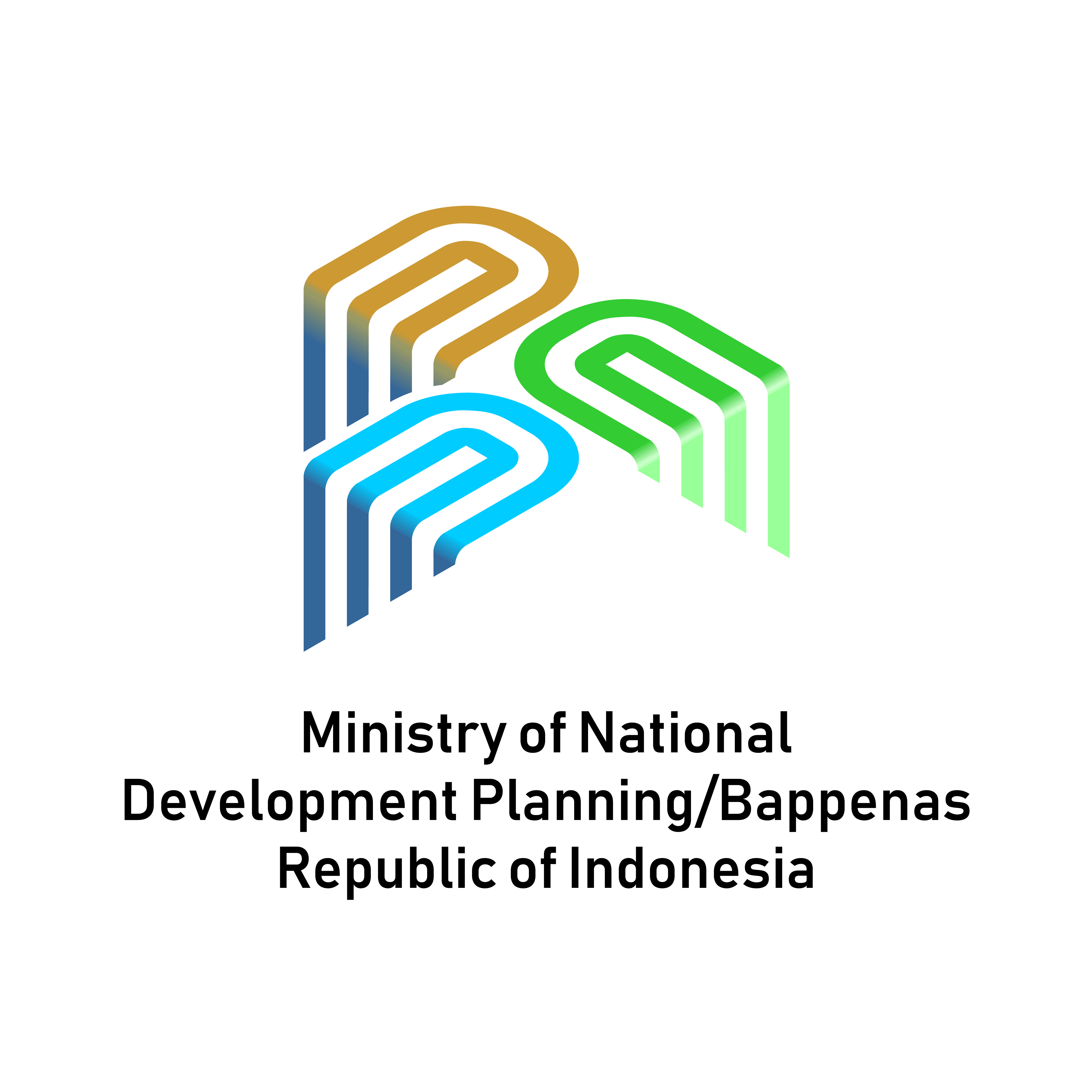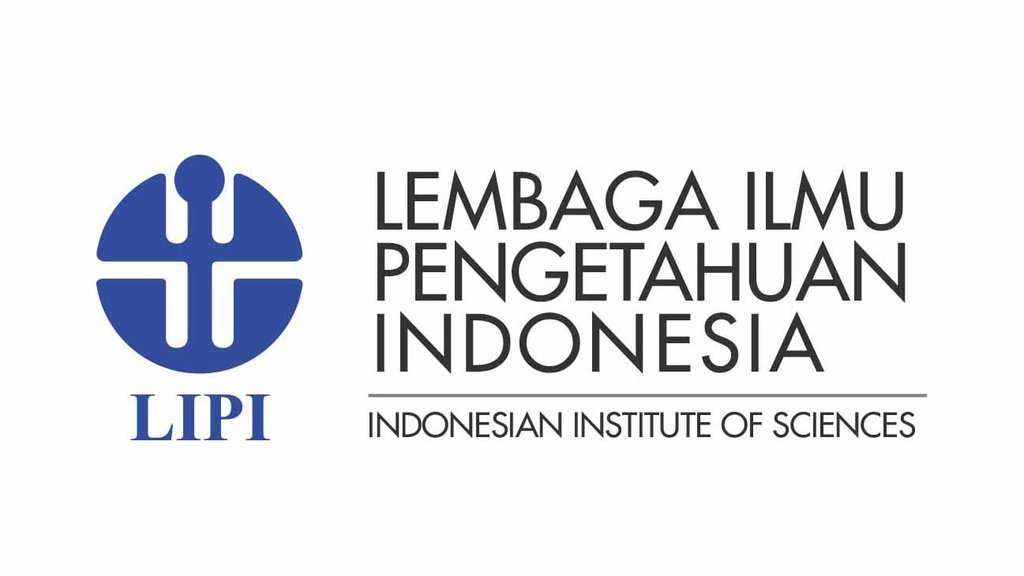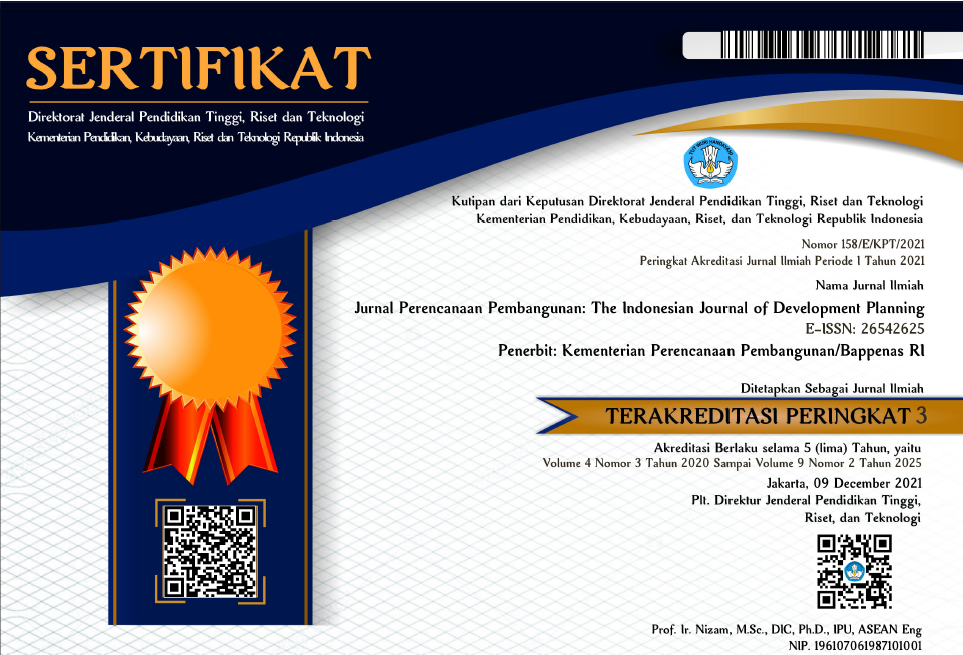Impact Of Electronic Signature Implementation on The Number of Birth Certificates
DOI:
https://doi.org/10.36574/jpp.v7i3.517Keywords:
Electronic Signature, Mean Years of Schooling, Public ServicesAbstract
This study compares the impact of the policy on implementing electronic signatures in the issuance of birth certificates in regencies/cities with low and high means years of schooling parents. Using Indonesian Susenas data from 2010-2021 and DID methods, this study finds that implementing electronic signatures could increase the number of birth certificates of 291 documents. However, by comparing the increase in the number of birth certificates subject to the number of birth certificates and the number of births, this study found that the impact of implementing electronic signatures was relatively low, around 7,02% and 3,73% in increasing the coverage of birth certificate ownership. This study also found economic benefits where each 1 rupiah of costs incurred generates 1,029 rupiahs in benefits. Electronic signatures can solve the difficulty of accessing civil registration services before implementation in regencies/cities with a low mean year of schooling parents but have a relatively low effect on increasing the coverage of birth certificate ownership.
Downloads
References
Amo-Adjei, J., & Annim, S. K. (2015). Socioeconomic determinants of birth registration in Ghana. BMC international health and human rights, 15(1), 1-9.
Angrist, Joshua, and Piscke, Jörn-Steffen (2014), Mastering' metrics: The path from cause to effect. Princeton: Princeton University Press. 304pp.
Bhatia, A., Ferreira, L. Z., Barros, A. J., & Victora, C. G. (2017). Who and where are the uncounted children? Inequalities in birth certificate coverage among children under five years in 94 countries using nationally representative household surveys. International journal for equity in health, 16(1), 1-11.
Corbacho A, Osorio R. Travelling the distance: A GPS-based study of the access to birth registration services in Latin America. Inter-American Development Bank Working Paper Series No 64458. 2011.
Dow U (1998) Birth Registration: The 'first' right. New York: UNICEF, 1998
Gultom, Y. M. L. (2019). Governance structures and efficiency in the US. electricity sector after the market restructuring and deregulation. Energy Policy, 129(March), 1008–1019. https://doi.org/10.1016/j.enpol.2019.02.005
Lepanto, L. (2003). Impact of electronic signature on radiology report turnaround time. Journal of Digital Imaging, 16(3), 306-309.
Lucas, B. A. M., & Mbiti, I. M. (2015). Access, Sorting, and Achievement: The Short-Run Effects of Free Primary Education in Kenya. Applied Economics, 4(4), 226–253.
Mapoma, C. C., Munkombwe, B., Mwango, C., Bwalya, B. B., Kalindi, A., & Gona, N. P. (2021). Application of verbal autopsy in routine civil registration in lusaka district of zambia. BMC Health Services Research, 21, 1-11. doi:https://doi.org/10.1186/s12913-021-06427-y
Mikkelsen L, Phillips D, AbouZahr C, Setel PW, de Savigny D, Lozano R, et al. A global assessment of civil registration and vital statistics systems: monitoring data quality and progress. Lancet, https://doi.org/10.1016/S0140-6736(15)60171-4. 2015
Mirchandani, D., Johnson Jr, J., and Joshi, K. 2008. "Perspectives of Citizens Towards E-Government in Thailand and Indonesia: A Multigroup Analysis," Information Systems Frontiers (10:4), pp. 483-497
Muralidharan, K., & Prakash, N. (2013). Cycling to School Increasing Secondary School Enrollment for Girls in India.
Mulgan, G., & Albury, D. (2003). Innovation in the public sector. Strategy Unit, Cabinet Office, 1(1), 40.
Oster, E. (2019). Unobservable selection and coefficient stability: Theory and evidence. Journal of Business & Economic Statistics, 37(2), 187-204.
Pais, M. S. (2002). Birth registration: right from the start. UNICEF Innocenti Digest, 9, 1-32.
Pärna, O., & Von Tunzelmann, N. (2007). Innovation in the public sector: Key features influencing the development and implementation of technologically innovative public sector services in the UK, Denmark, Finland and Estonia. Information Polity, 12(3), 109-125.
Rizqiqa, E. D., & Amalia, R. (2021). Efektivitas Pelayanan Penerbitan Kartu Keluarga Melalui Tanda Tangan Elektronik Di Dinas Kependudukan Dan Pencatatan Sipil Kota Solok Provinsi Sumatera Barat. Jurnal Media Birokrasi, 29-43.
Rusli, A. (2004). Telematika Indonesia Kebijakan Dan Perkembangan Tim Koordinasi Telematika Indonesia. Jakarta: Kementrian Komunikasi Dan Informasi Republic Indonesia.
Setel, P. W., Macfarlane, S. B., Szreter, S., Mikkelsen, L., Jha, P., Stout, S., ... & Monitoring of Vital Events (MoVE) writing group. (2007). A scandal of invisibility: making everyone count by counting everyone. The Lancet, 370(9598), 1569-1577.
Septinaa, A. A. (2021). Efisiensi Tanda Tangan Elektronik dalam Pelayanan Adminduk Daring di Disdukcapil Kabupaten Wonogiri. Jurnal Jolsic, 9.
Sumner, C. (2015). Indonesia's missing millions: erasing discrimination in birth certification in Indonesia. Center Global Development Policy Paper, 64, 1-35.
Sumner, C., & Kusumaningrum, S. (2014). Indonesia's missing millions: a baseline study on legal identity. Jakarta, Indonesia: Australian Indonesia Partnership for Justice.
Hull, T. H. (2007). 15 Formative Years of Family Planning in Indonesia'. The global family planning revolution: Three decades of population policies and programs, The Word Bank, Washington, DC, 235.
UNICEF. (2019). Birth registration for every child by 2030
Unicef. (2013). A passport to protection: a guide to birth registration programming. New York: UNICEF.
Wasista, R. F. (2020). Analisis Pengaruh Rata Lama Sekolah, Angka Harapan Hidup, Dan Pengeluaran Perkapita Terhadap Penyerapan Tenaga Kerja Perempuan Pada Sektor Formal Di Indonesia (Doctoral dissertation, Universitas Brawijaya).
Downloads
Published
How to Cite
Issue
Section
License
Copyright (c) 2023 Jurnal Perencanaan Pembangunan: The Indonesian Journal of Development Planning

This work is licensed under a Creative Commons Attribution-NonCommercial-ShareAlike 4.0 International License.
This is an open-access article distributed under the terms of the Creative Commons Attribution-NonCommercial-ShareAlike 4.0 International License. Copyright © Kementerian PPN/Bappenas RI


















